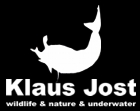Apps (iPhone, iPad & iPod):
![]() great white shark
great white shark
![]() sharks
sharks
![]() seabirds
seabirds
Scientific shark articles
Alaska & Wildlife
Arctis
Birds
Cities
Egypt - Land of the Nile
Fauna & Flora Fiji
Fiji sharkproject
Mountains
Nature
Penguins & seals
Sea
Seabirds
Sharks
Southern Right Whale
Underwater
Wildlife South Africa
Visit our photo gallergy for photos of the African Penguin, South African Fur Seal and Hawaiian Monk Seal (Monachus schauinslandi).
African Penguins (Spheniscus demersus) and other rare sea birds breed on Dyer Island, six sea miles off the coast of Gansbaai/South Africa. The ruins of a former guano station are still there. Later on, after the guano supplies were depleted, the seal beaters and penguin hunters came to the island. You can still see the sad relics from this time. Until the end of last century penguins were killed for their oil. This gruesome butchery was only stopped in 1919. The stock of African Penguins in South Africa decreased between 1956 and 1978 by more than 50%, in part because of the overfishing in their food grounds. In the Washington Endangered Species Act, African Penguins are mentioned as an endangered species in Appendix II. Now, Dyer Island and its fauna and flora are completely protected. Only a conservationist and sometimes a biologist live on the island. If a group of penguins returns from its hunting grounds far out on the sea, full concentration is necessary. Their way is always full of danger, because they cross the area of the Great White Sharks. Another threat awaits them a short distance off the island: fur seals are lurking in the Kelb belt. In order to manage the last metres to the island safely they suddenly sprint off. They chase along, halfway under water and halfway above the water. In the end phase you can only see seething water. Finally, they find peace and security only on the island – until next time.On the rocky island called Geyser Rock, in the immediate vicinity of Dyer Island, lives a seal colony of approximately 60,000 animals. As long as the South African Fur Seals (Arctocephalus pusillus) stay ashore and in the shallow water in the immediate vicinity of the island there is no danger for them. But if they start for their fishing hauls on the open sea – they dive 40 to 50 metres deep and are able to stay under water for up to five minutes – while swimming out and at their return, they have to cross a dangerous area which is tough for them. White Sharks lurk here. Seals are especially valuable for them. The danger is not over until the seals are back ashore. The high concentration of Great White Sharks is due to the seal colony.
Approximately 60 Hawaiian Monk Seals (Monachus schauinslandi) live on the Midway Atoll. These animals – they live in the north-west of the atoll on remote and uninhabitated islands – are only found here, and in no other place in the world. The Hawaiian Monk Seals reach a length of two metres and a weight of between 200 and 300 kilograms. They feed on reef fish,octopusses and lobsters, which they find in the shallow water. But they are also able to hunt for their food in the open sea.
The Monk Seals are extremely sensible against human influence of any kind and are threatened by extinction. There are three species of Monk Seals:
- Hawaiian Monk Seal (Monachus schauinslandi, estimated population approx. 1,000 animals)
- Caribbean Monk Seal (Monachus tropicalis, presumably extinct)
- Mediterranean Monk Seal (Monachus monachus, estimated population approx. 300 to 400 animals).

